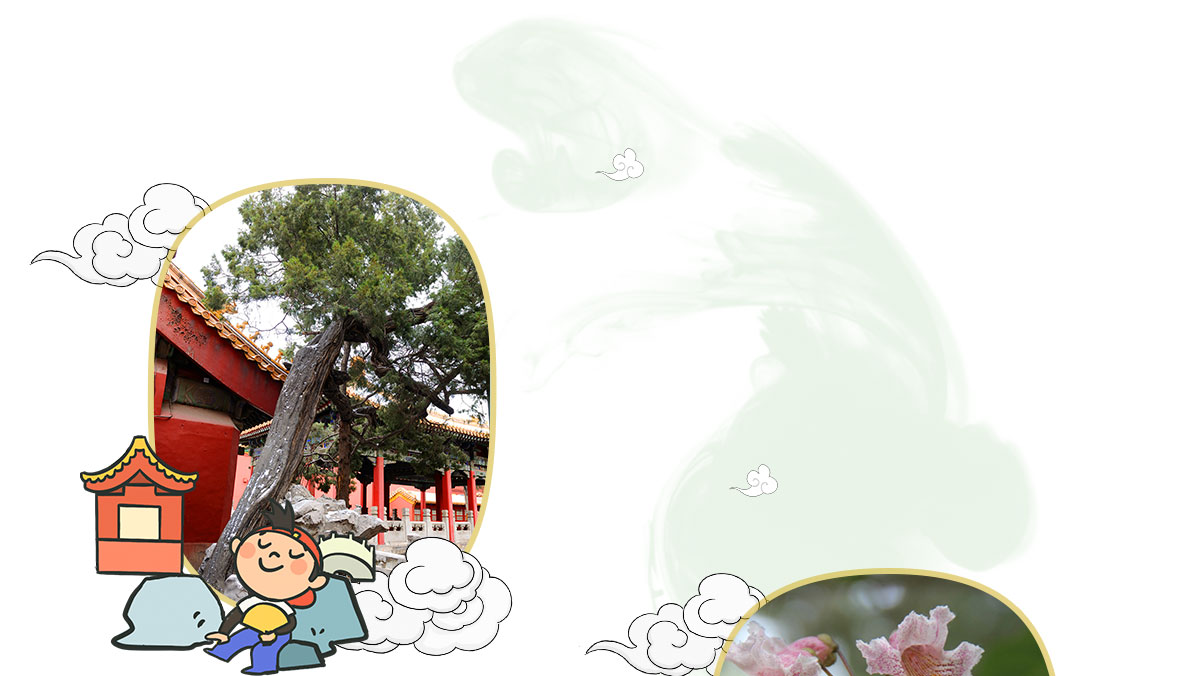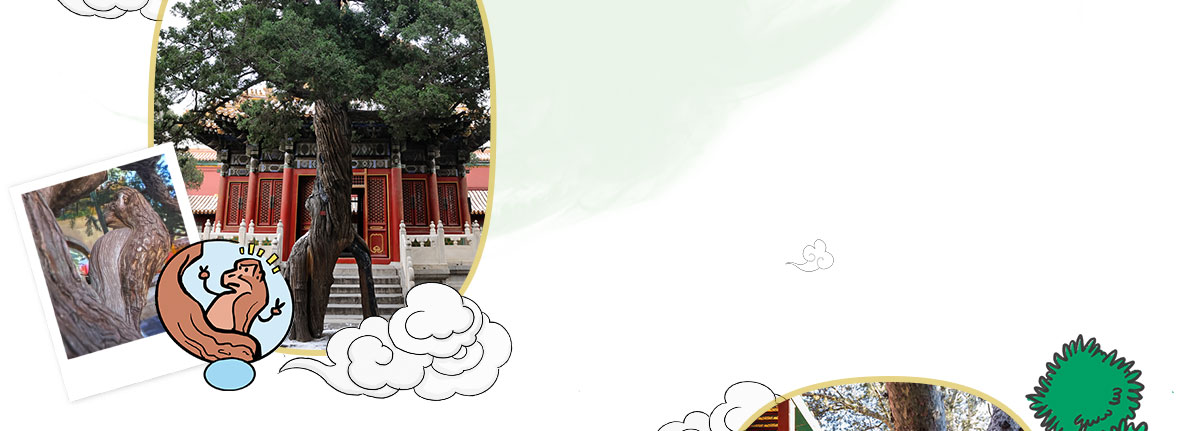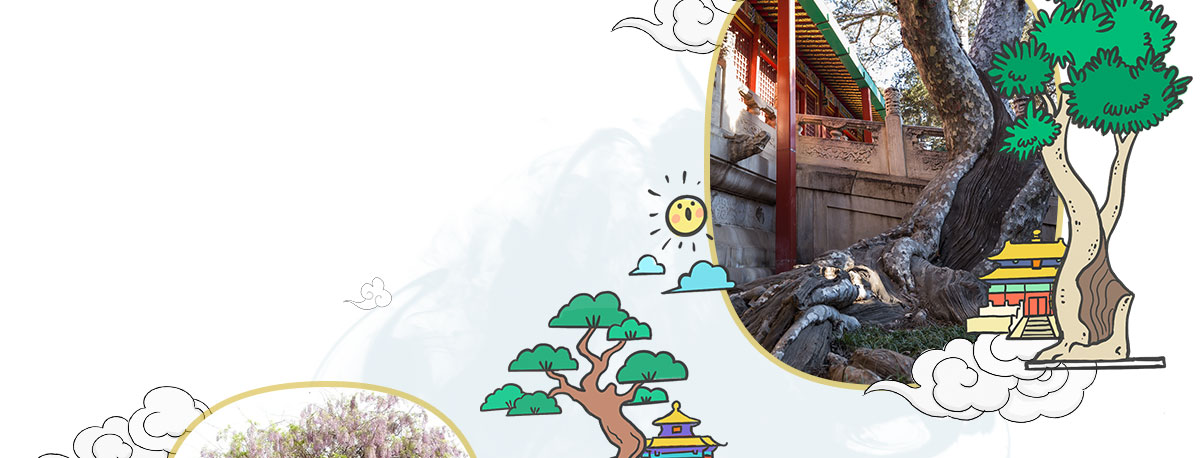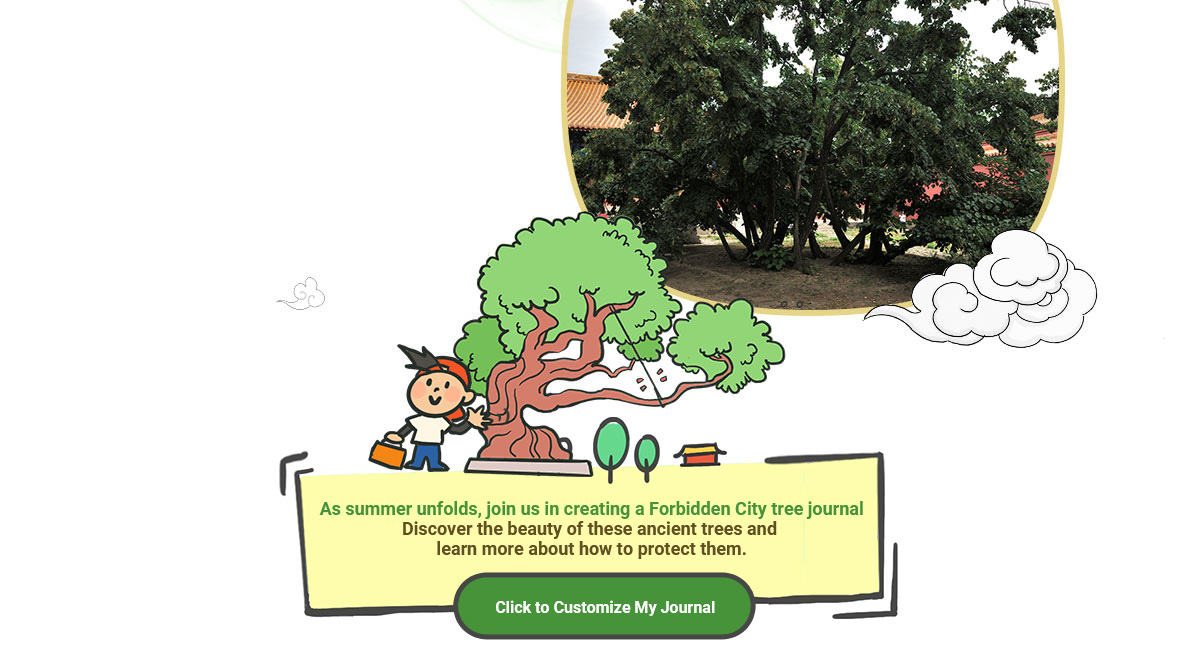Within the Forbidden City stands a special type of “living relics”—ancient and famous trees. Though centuries old, they remain lush and vigorous, bringing shade and vibrancy to the former imperial palace. According to the Regulations of Beijing Municipality on the Protection and Management of Ancient and Famous Trees, ancient trees are those over a century old, with those exceeding 300 years classified as Grade I and the rest as Grade II. Rare and historically significant trees are considered famous trees. The Forbidden City hosts 448 such trees, with 34 more in the nearby Great Tall Daoist Hall (Dagao xuandian), totaling 482 trees. Among them, 114 are Grade I, and 368 are Grade II. Now, let’s explore some fascinating stories behind these venerable giants.
The Cypress Honored as “Marquis of Shade” — Hall of Literary Elegance  Chizao tang
Chizao tang
Legend has it that during one southern tour of Emperor Qianlong (r. 1736–1795), a towering cypress unexpectedly provided him shade on a scorching day as his boat sailed down the river. Upon returning to the imperial palace, he miraculously recognized the same cypress in the Imperial Garden and bestowed upon it the title “Marquis of Shade”.
The Homesick Catalpa — Gate of Earthly Tranquility  Kunning men
Kunning men
Catalpa trees, second only to pines and cypresses in number, dominate the gardens of the Forbidden City. The one growing northwest of the Gate of Earthly Tranquility was considered sacred during the Qing dynasty (1616-1911). Each year, soil from Fengtian (now Shenyang) was ceremoniously added around its roots. Wastewater and refuse were strictly forbidden in the area. The catalpa always symbolizes home and family as The Book of Songs says,
“To the mulberry and catalpa planted by parents,One must pay profound respects. Who does not esteem one’s father? Who does not loathe to leave one’s mother?”
“Interlocked” and “Human-Shaped” Cypresses  Imperial Garden
Imperial Garden
In the Imperial Garden, the “Interlocked Cypress” and the “Human-Shaped Cypress” showcase ancient horticultural expertise. The Interlocked Cypress was crafted by inarching two tree trunks, while the Human-Shaped Cypress was artfully shaped into a human-like form. The one near the Gate of Heaven’s Primacy (Tianyi men) resembles a macaque with its carefully pruned branches.
“White-Robed General” — Hall of Imperial Peace  Qin’an dian
Qin’an dian
The Hall of Imperial Peace is guarded by a magnificent white-bark pine, a rare species unique to China. Its trunk, weathered and white as aged parchment, evokes a vigilant dragon lying in wait. With a trunk circumference of 101 centimeters, it is the tallest ancient tree in the Palace Museum, earning the nickname “White-Robed General”.
Spring Reborn from Withered Cypress — Palace of Eternal Harmony  Yonghe gong
Yonghe gong
Even dead trees find new life in the Forbidden City. At the Palace of Eternal Harmony, ancient cypresses long past their prime are adorned with wisteria and climbing vines. When in bloom, the flowers cascade over the old branches, creating an enchanting tableau of rebirth and resilience.
“Bonsai” Pine Grove — Inside Gate of Imperial Supremacy  Huangji men
Huangji men
Between the Gate of Imperial Supremacy and the Gate of Tranquil Longevity (Ningshou men) stands the oldest grove of Chinese pines in the palace. Their layered branches resemble carefully cultivated bonsai trees. Three of these venerable pines, preserved with sturdy supports, fan out gracefully like a giant, leafy umbrella.
“Sixteen and a Half” Ancient Scholar Trees  Eighteen Scholar Trees Area
Eighteen Scholar Trees Area
The area known as “Eighteen Scholar Trees” intriguingly hosts only “sixteen and a half” ancient scholar trees. The half comes from a sprout emerging from the rootstock of an ancient one. During the 1950s and 60s, the Palace Museum planted eighteen additional scholar trees among the old ones. These newcomers are now nearly 70 years old.
Sacred Bodhi or Hardy European Linden? — Hall of Valor and Brilliance  Yinghua dian
Yinghua dian
Historical records in The Chronicles of the Qing Palace mention two “Bodhi trees” at the Hall of Valor and Brilliance, said to have been personally planted by Empress Dowager Xiaoding (1545-1614) of the Ming dynasty (1368-1644). However, modern botanical studies reveal that these trees, which are ages old and may have unusual origins, are not true Bodhi trees but European lindens, which better withstand the harsh northern climate.







